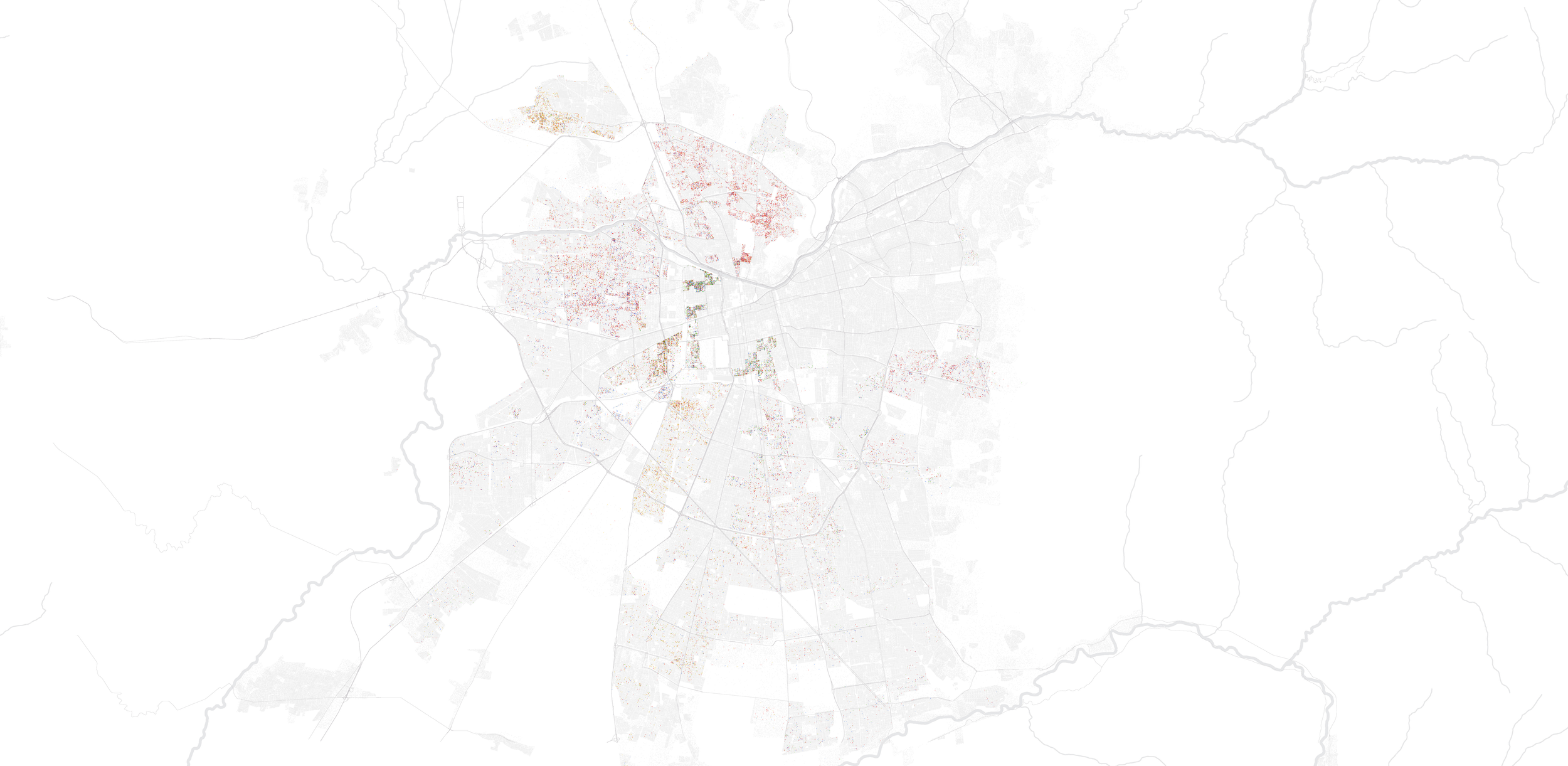RESEARCH PROJECT:
INTERSECTIONAL GIS MAPPING
These GIS maps reveal spatial segregation patterns at the city scale that affect the urban experiences of nonhegemonic communities. They do so by mapping demographic distributions and adopting an intersectional framework originally developed by Black scholars. This framework considers multiple and interacting markers of social oppression, such as immigration date, generation and refugee status, nationality, ethnicity, gender, and economic security.
Urban Distribution of immigrant populations per nationality, Santiago metropolitan area, Chile. (CC: All rights reserved)
Natalia Escobar Castrillon with Stefano Romagnoli (Region Austral), and Sofía Ugarte (Cambridge University)
Case-study: Immigrant populations in Santiago Metropolitan Area, Chile
Urban Distribution of immigrant women per nationality in areas of economic insecurity, Santiago metropolitan area, Chile. (CC: All rights reserved)
Natalia Escobar Castrillon with Stefano Romagnoli (Region Austral), and Sofía Ugarte (Cambridge University)
Supported by the non-for-profit organization the Inter-American Development Bank and Carleton University

